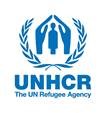Vulnerability Assessment of Syrian Refugees in Lebanon 2022
Lebanon, 2022
Get MicrodataIdentification
LBN_2022_VASYR_v01_M
Vulnerability Assessment of Syrian Refugees in Lebanon 2022
| Name | Country code |
|---|---|
| Lebanon | LBN |
Other Household Survey [hh/oth]
The 2022 Vulnerability Assessment of Syrian Refugees in Lebanon (VASyR) is the tenth annual representative survey assessing the situation of Syrian refugees in Lebanon, with the aim to identify changes and trends in their vulnerabilities. Since its first round of data collection and assessment, the VASyR has become an essential tool for planning, shaping decision-making and the design of needs-based programmes. The results of the VASyR are used by the 10 sectors in partnership under the Lebanon Crisis Response Plan (LCRP), in order to understand the situational changes in Lebanon and advocate for funding. The VASyR has also been used to build targeting models, for instance to predict socioeconomic vulnerability and allocate assistance accordingly. Furthermore, the results of the VASyR reveal the geographical differences in vulnerabilities at governorate and district levels, which then feed into the situation analysis.
Sample survey data [ssd]
Household
Version
Version 2.1: Edited, cleaned and anonymised data.
Scope
The scope includes:
- key indicators on household demographics
- safety and security
- accomodation
- health
- food security
- livelihoods
- expenditures
- food consumption
- coping strategies and assistance
- education
| Topic |
|---|
| Food security |
| Livelihood and Social cohesion |
| Basic Needs |
Producers and sponsors
| Name | Affiliation |
|---|---|
| UN Refugee Agency (UNHCR) | UN |
| World Food Program | WFP |
| United Nations International Children's Emergency Fund | UNICEF |
Sampling
Sampling for the VASyR follows a two-stage cluster approach, keeping with the methodology of previous years. UNHCR database of known Syrian refugees as of 2022 served as the sample frame. Cases with missing addresses were excluded. Sampling was based on a 30 x 7 two-stage cluster scheme initially developed by the World Health Organization. This method outlines a sample size of 30 clusters per geographical area and seven households per cluster which provides a precision of +/- 10 percentage points. Districts were considered as the geographical level within which 30 clusters were selected. There are 26 districts in Lebanon, where Beirut and Akkar each represent a district and a governorate. As such, to ensure similar representativeness with other governorates, an additional two cluster samples were considered for each, yielding 90 cluster selections for each. The governorate of Baalbek Hermel is made up of only two districts, as such, and to ensure an adequate sample in that governorate, one additional cluster sample was considered.
The primary sampling unit was defined as the village level (i.e. cluster) and UNHCR cases served as the secondary sampling unit. A case was defined as a group of people who are identified together as one unit (usually immediate family/household) under UNHCR databases. Using Emergency Nutrition Assesment (ENA) software, villages were selected using probability proportionate to size where villages with a larger concentration of refugees was more likely to be selected and 30 clusters/villages were selected with four replacement clusters, per district.
In order to estimate the sample size needed to generate results that are representative on a district, governorate and national level, the following assumptions were used:
- 50% estimated prevalence
- 10% precision
- 1.5 design effect
- 5% margin of error
Using the above parameters, 165 cases per district/cluster selection was required, leading to a target of 5,000 cases nationally. Due to the known high level of mobility of the Syrian refugee population and based on experience in previous rounds of VASyR and other household level surveys, a 40% non-response rate was considered.
Data collected through this assessment was weighted at the district level based on the population of refugees in each district. Weighting was necessary to ensure that the geographical distribution of the population was reflected in the analysis and to compensate for the unequal probabilities of a household being included in the sample. The normalized weight was calculated for each district using the following formula:
Normalised weight = (total sample frame of the district/ total national sample frame) / (total number of households visited in the district / total number of households visited)
Survey instrument
The 2021 VASyR questionnaire collected data at the household level and individual level including demographics, legal documentation, safety and security, shelter, WASH, health, food security, livelihoods, expenditures, food consumption, debt, coping strategies and assistance, as well as questions specifically relating to women, children and people with disabilities.
Data collection
| Start | End |
|---|---|
| 2022-06-06 | 2022-07-07 |
- Face-to-face [f2f]
| Name |
|---|
| Caritas |
| World Vision International |
| Makhzoumi Foundation |
| SHIELD |
Data Access
UNHCR, WFP, UNICEF (2022). Lebanon: Vulnerability Assessment of Syrian Refugees in Lebanon, 2022. Accessed from: https://microdata.unhcr.org
Contacts
| Name | Affiliation | |
|---|---|---|
| Curation team | UNHCR | microdata@unhcr.org |
Metadata production
DDI_LBN_2022_VASYR_v01_M
| Name | Affiliation | Role |
|---|---|---|
| UN Refugee Agency | UN | Metadata producer |
| Development Economics Data Group | The World Bank | Metadata adapted for World Bank Microdata Library |
2023-07-12
Metadata version
Version 01 (July 2023): This metadata was downloaded from the UNHCR catalog (https://microdata.unhcr.org/index.php/home) and it is identical to UNHCR version (UNHCR_LBN_2022_VASYR_v2.1). The following two metadata fields were edited - Document ID and Survey ID.
